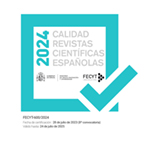Metaphorical dimension of idioms in TV series for German, Norwegian and Spanish audiences
Resumo
Over recent years, internet TV series have grown in popularity to become one of the audiovisual products with the highest audiences worldwide. The Covid crisis, with limitations on movement, has further increased their success during 2020-21. English is by far the most common language for such productions, which are typically offered to non-anglophone viewers in translated format, with either subtitles or dubbing. One of the main challenges in translation here concerns the use of idioms, since these do not always have a fixed equivalent in the target language. Taking as a starting point a corpus of drama series from Netflix and Amazon Prime, this study considers the metaphorical dimension of idioms in original TV series in English and the subtitling of these in German, Norwegian and Spanish. The aim is to analyze the strategies used in the translation process, and to look at the differences between the original dialogues and the translated subtitles. The data are described from a cognitive and contrastive perspective, according to the methodology developed by the author. The results of the analysis show a general trend towards the reduction of metaphorical expressions in the translated subtitles. Significant differences are found between the translations into the three target languages under examination. A surprising finding is that there are more similarities between the German and Spanish translations than between those into German and Norwegian, despite these latter two belonging to the same Germanic linguistic family.
Downloads
##submission.format##
Licença
La revista Estudios de Traducción, para fomentar el intercambio global del conocimiento, facilita el acceso sin restricciones a sus contenidos desde el momento de su publicación en la presente edición electrónica, y por eso es una revista de acceso abierto. Los originales publicados en esta revista son propiedad de la Universidad Complutense de Madrid y es obligatorio citar su procedencia en cualquier reproducción total o parcial. Todos los contenidos se distribuyen bajo una licencia de uso y distribución Creative Commons Reconocimiento 4.0 (CC BY 4.0). Esta circunstancia ha de hacerse constar expresamente de esta forma cuando sea necesario. Puede consultar la versión informativa y el texto legal de la licencia.









